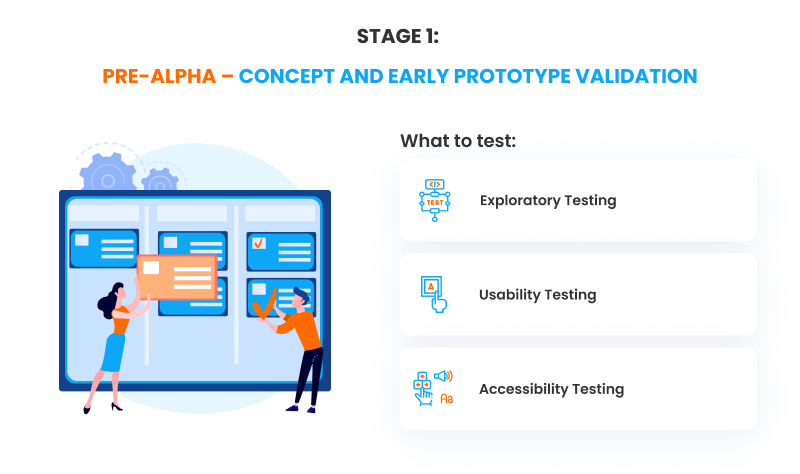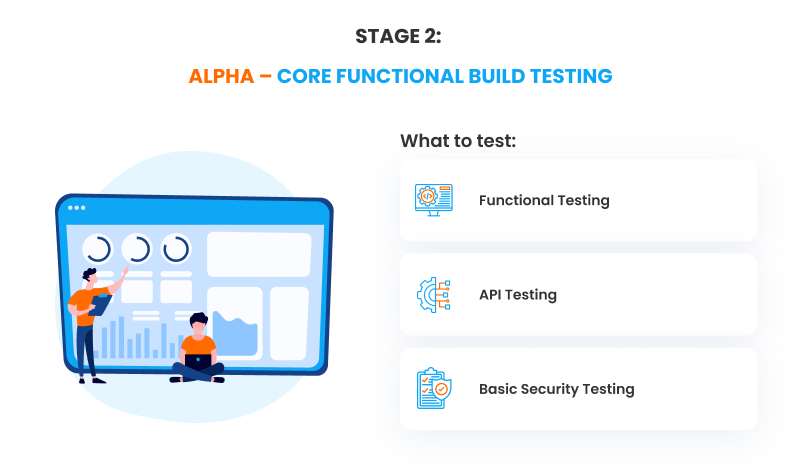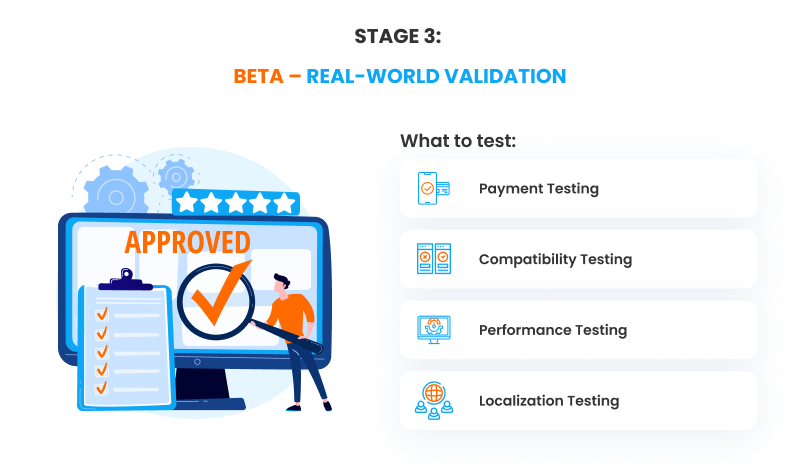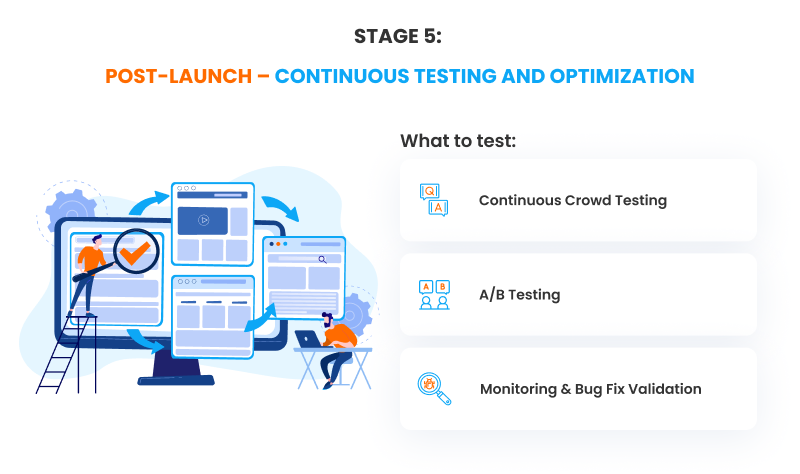Crowd Testing Your FinTech App: What to Test at Each Stage and the Risks of Skipping It

Introduction: Why Testing Is Mission-Critical for FinTech Apps
Launching a fintech app is not like launching a casual lifestyle app. When clients are trusting you with their money and personal information, the stakes do not get any higher. A single bug in a payment flow, a single minor security weakness, or a single clunky onboarding experience can irrevocably destroy user trust and your reputation. A Statista survey in 2024 discovered that 48% of consumers will abandon a financial app forever after a single failed transaction, and 70% will switch to a competitor if security is in doubt.
That is where crowd testing shines. Unlike in-house testing, crowd testing leverages a distributed network of real-world testers across geographies, devices, and networks. This diversity is critical in fintech, where apps must work across regions, payment options, compliance frameworks, and customer expectations.
In this article, we’ll map essential crowd testing activities across the software development life cycle (SDLC), from pre-alpha to post-launch, highlighting what to test at each stage, the risks of skipping them, and how Ubertesters helps fintech companies protect revenue and trust.
Stage 1: Pre-Alpha – Concept and Early Prototype Validation

What to test:
At the pre-alpha stage, your fintech app is no more than wireframes, clickable prototypes, or a preliminary first build. While it might feel "too early" to test, skipping this stage can lock you into flawed assumptions that are expensive to fix down the line.
Exploratory Testing:
Crowd testers can interact with your first prototype to identify unclear flows, confusing navigation, or missed user essentials.
Usability Testing:
Is your onboarding intuitive? Can users tell where to start? Early usability feedback from target users saves time down the line.
Accessibility Testing:
Test compliance with WCAG guidelines for users with disabilities (e.g., screen reader compatibility, color contrast). Accessibility compliance isn't just ethical, it's mandatory in most jurisdictions.
Damage if skipped:
Fixing UX issues after development costs 10-15x more than if they're caught early.
Poor user experience at launch can result in 30% less user engagement.
Inaccessible applications can be sued (e.g., ADA in the United States), with damages up to $100,000+ per occurrence.
Case in point: Paytm’s 2017 Canadian launch failed due to a confusing UI and missing features. The company later shut down its operations, incurring millions of dollars in losses.
Ubertesters’ Crowd Testing Advantage: With a large, diverse tester pool, Ubertesters quickly identifies navigation pain points and accessibility issues that internal teams often overlook.
Stage 2: Alpha – Core Functional Build Testing

At the alpha stage, the majority of the app's core functionality is built: user accounts, KYC workflows, money transfers, and transaction history screens.
What to test:
Functional Testing:
Ensure all features work as expected: user sign-up, login, account linking, deposits, withdrawals, and balance updating.
API Testing:
Verify your app's backend integrations (with payment processors, banks, and KYC providers, for instance) return correct and timely responses.
Basic Security Testing:
Check for blatant vulnerabilities such as unsecured endpoints, weak password policies, or unencrypted sensitive data.
Damage if skipped:
- Without functional tests, 40–60% feature failure rates will frustrate users.
- API downtime during transactions can result in double-charging or lost funds, resulting in direct financial loss and user churn.
- Security vulnerabilities can be catastrophic: the average cost of a fintech data breach is $4.45 million (IBM 2023 Data Breach Report).
Real-world example: Monzo disclosed in 2021 that user PINs had been inadvertently logged in their backend systems. While there were no breaches, the potential security implications meant a loss of user trust and exhaustive fixes.
Ubertesters’ Crowd Testing Advantage: Real-world testers replicate diverse user journeys and API scenarios at scale, something in-house teams cannot easily match.
Stage 3: Beta; Real-World Validation

The beta is when your application is feature-complete and ready to be tested in the real world before public launch.
What to test:
Payment Testing:
Test all payment methods: debit/credit cards, ACH transfers, digital wallets, recurring billing, refunds, and chargebacks. Include testing edge cases like expired cards or insufficient funds.
Compatibility Testing:
Test the application on various devices, operating systems, and screen sizes. Your users will have various hardware and software setups.
Performance Testing:
Conduct load, stress, and latency testing to ensure your app can handle peak traffic (e.g., payday transfers or promotional campaigns).
Localization Testing:
If you are serving multiple territories, ensure translations, date formats, currencies, and regulatory disclaimers are displayed appropriately.
What’s at risk if skipped:
- Payment failures can lead to direct revenue loss of 15–25% in early months and destroy user trust.
- Performance issues (i.e., crashing or slow loading) will lead to 50% of users abandoning the app forever after just one crash (TechCrunch 2024).
- Localization errors will expose you to regulatory fines (i.e., incorrect disclaimers) or offend new market users.
Real-world example: Robinhood's trading app went down in 2020 during market volatility, locking users out of purchases or sales of securities. The company was slapped with lawsuits and a $70 million FINRA fine, along with severe user attrition.
Ubertesters’ Crowd Testing insight: A global tester base validates payments, performance, and localization under authentic conditions that labs cannot simulate.
Stage 4: Pre-Launch – Final Polish and Compliance

Your app is almost ready to launch in the app stores now. Final testing ensures that you don't launch with show-stopping bugs.
What to test:
Regression Testing:
Ensure that bug fixes made recently did not introduce new bugs elsewhere in the app.
Security Penetration Testing:
Conduct deep penetration testing to identify vulnerabilities that can be exploited by hackers.
Compliance Testing:
Maintain adherence to industry benchmarks like PCI DSS (for payments), SOC 2 (data security), and GDPR/CCPA (data privacy).
What’s at risk if skipped:
- Non-compliance fines: up to 4% of annual revenue under GDPR.
- Uncaught regressions can increase churn by 20–30% as users have a continuous poor experience.
- One successful hack can ruin your reputation and result in multi-million-dollar losses.
Real-world example: In 2020, German fintech Wirecard collapsed after a €1.9 billion accounting scandal. While not purely technical, weak internal controls and compliance shortcomings were major contributors, which shows how important this step is.
Ubertesters’ Crowd Testing insight: Crowd testers with varying environments can detect regressions faster, while dedicated security testers can simulate real-world attacks.
Stage 5: Post-Launch; Continuous Testing and Optimization

Testing doesn't end at launch. Continuous feedback and verification are required to build quality and user trust.
What to test:
Continuous Crowd Testing:
Constantly gather bug reports and edge case situations from real users.
A/B Testing:
Experiment with various onboarding flows, feature placements, or pricing models to maximize user retention and revenue.
Monitoring & Bug Fix Validation:
All patches and new releases need regression testing and functional testing to ensure updates don't break existing features.
What’s at risk if skipped:
- Undertreated bugs can lead to 35% more churn after six months.
- Failure to optimize through A/B testing can reduce feature adoption and conversion rates by 10–20%.
- Unmonitored failures (e.g., deposits) cause massive losses.
Case in point: Google Pay India suffered transaction failures after a 2019 update. The delayed fix cost millions and user trust.
Ubertesters’ Crowd Testing insight: With 150+ countries represented, Ubertesters crowd testing quickly detects edge cases and validates fixes post-launch, as your user base grows.
The Business Case: Why Testing Pays for Itself
Testing might appear to be an expense, but it's actually one of the smartest investments you can make. A study by Capers Jones (2023) shows that for every $1 spent on early testing, $10–$15 is saved on post-release fixes.
Skimping on sufficient testing can lead to:
- Lost revenue due to payment failure or crashes.
- User attrition due to poor experience.
- Regulatory fines and lawsuits.
- Irreversible brand damage.
Crowd testing ROI is even higher: coverage across devices, geographies, and payment methods without hiring large QA teams. Ubertesters clients often reduce post-launch defect rates by 30–40% by embedding crowd testing throughout the SDLC.
Conclusion: Establish a Culture of Continuous Real-World Verification
A fintech application is only as strong as its weakest link. Omitting even one critical type of test at the right stage can result in catastrophic financial and reputational loss.
By embedding crowd testing into every SDLC phase: pre-alpha usability, alpha functionality, beta payment validation, pre-launch compliance, and post-launch monitoring, fintech companies dramatically reduce risks and accelerate growth.
Remember: users expect perfection when it comes to their money. Offer anything less, and they'll turn to a competitor. Partnering with Ubertesters’ global tester community ensures you deliver it before your competitors do.

